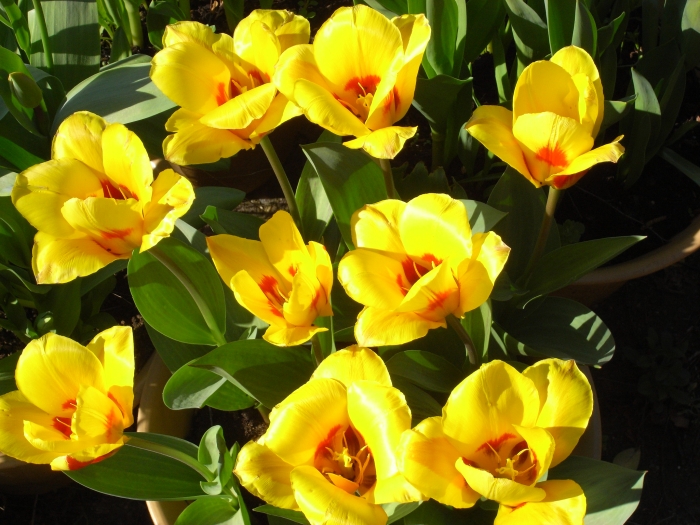Water-Lily Tulip
(Tulipa kaufmanniana)
Water-Lily Tulip (Tulipa kaufmanniana)
/
/

David Wright
CC BY 2.0
Image By:
David Wright
Recorded By:
Copyright:
CC BY 2.0
Copyright Notice:
Photo by: David Wright | License Type: CC BY 2.0 | License URL: https://creativecommons.org/licenses/by-sa/2.0/ | Uploader: D H Wright | Publisher: Flickr |
















Estimated Native Range
Summary
Tulipa kaufmanniana, commonly known as Water-Lily Tulip, is a deciduous perennial bulb native to the rocky subalpine meadows and stony slopes of Central Asia, particularly Kazakhstan, Uzbekistan, and Kyrgyzstan. It typically grows to a height of 0.5-1 feet (15-30 cm) and a width of 0.2-0.5 feet (6-15 cm). The Water-Lily Tulip is notable for its early spring blooms, which open flat like water lilies on sunny days, displaying a range of colors including cream, yellow, pink, red, and white. The flowers are particularly showy due to their large size relative to the plant’s overall height.
The Water-Lily Tulip is valued for its early flowering period, often being one of the first tulips to bloom in the garden. It is ideal for rock gardens, borders, and as a colorful ground cover. This tulip prefers full sun but can tolerate light shade and requires well-drained soil to prevent bulb rot. While it has low to medium water requirements, it is important to keep the soil dry during the summer dormancy period. Gardeners often plant it in groups for a striking display. There are several cultivars available, offering variations in flower color and form. The main challenge in cultivating Tulipa kaufmanniana is avoiding wet conditions that can lead to bulb decay, and protecting the blooms from late winter or early spring frosts.CC BY-SA 4.0
The Water-Lily Tulip is valued for its early flowering period, often being one of the first tulips to bloom in the garden. It is ideal for rock gardens, borders, and as a colorful ground cover. This tulip prefers full sun but can tolerate light shade and requires well-drained soil to prevent bulb rot. While it has low to medium water requirements, it is important to keep the soil dry during the summer dormancy period. Gardeners often plant it in groups for a striking display. There are several cultivars available, offering variations in flower color and form. The main challenge in cultivating Tulipa kaufmanniana is avoiding wet conditions that can lead to bulb decay, and protecting the blooms from late winter or early spring frosts.CC BY-SA 4.0
Plant Description
- Plant Type: Bulb
- Height: 0.5-1 feet
- Width: 0.2-0.5 feet
- Growth Rate: Moderate
- Flower Color: Yellow, Pink, Red, White
- Flowering Season: Spring
- Leaf Retention: Deciduous
Growth Requirements
- Sun: Full Sun
- Water: Low, Medium
- Drainage: Medium
Common Uses
Bank Stabilization, Border Plant, Fragrant, Low Maintenance, Potted Plant, Rock Garden, Showy Flowers
Natural Habitat
Rocky subalpine meadows and stony slopes of Central Asia
Other Names
Common Names: Näckrostulpan
Scientific Names: , Tulipa kaufmanniana, Tulipa berkariensis, Tulipa kaufmanniana subsp. aurea, Tulipa kaufmanniana subsp. coccinea,
GBIF Accepted Name: Tulipa kaufmanniana Regel